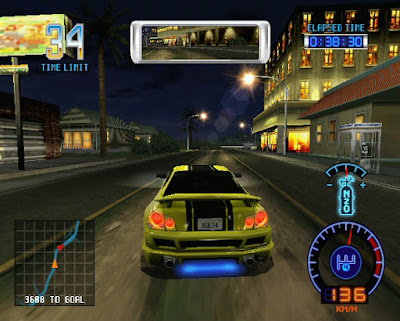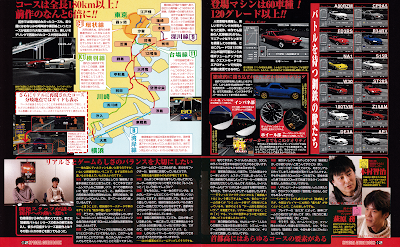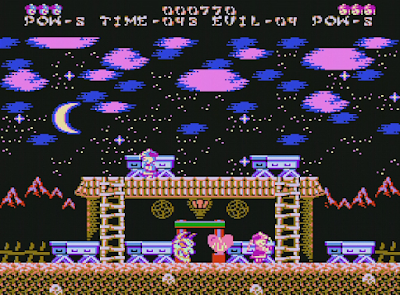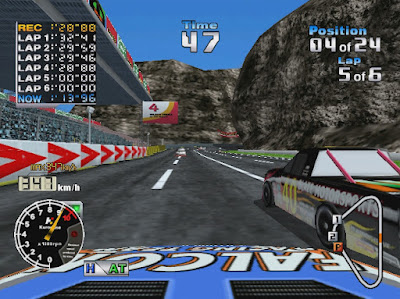To say that online multiplayer was a central pillar of the Dreamcast brand would be an understatement. From day one it was touted as a standout feature, placed front and centre of most of the big marketing campaigns, and generally bigged-up by Sega executives at any opportunity that arose, from press interviews to industry events.
After a bit of a delay and some teething issues following the console's launch, an impressive online architecture was erected and over 80 games were released with an online multiplayer mode between 1999 and 2002. While hundreds of thousands had the fortune to experience the joys of playing their little white box online during this period, online multiplayer facilities did not send the Dreamcast into the stratospheric heights hoped for by Sega, and the official online lifespan of some games was as gut-wrenchingly brief as that of the commercial days of the console itself.
 |
| No doubt Sega had to spend a pretty penny to gain celebrity endorsements like this one... |
Daytona USA 2001, the go-to title for unabashed all-out
arcade-racing on the Dreamcast, is a prime example. Released to largely positive reviews (90% in Paragon's Dreamcast Magazine) between December 2000 and May 2001 across different regions, the official server reportedly
ceased to function before the end of 2002. I haven't been able to source a firm verification of precisely when the server closed, but by most accounts it was only operational for 18 months at most. Mercifully though, for those of
us who are hooked on the delights that online multiplayer on the Dreamcast can bring, I am delighted to report that we are now achingly
close to being able to play this particular title online once more.
That's right readers. Believe your eyes and ears. In the near future, Daytona USA 2001
is due to be playable online on the Dreamcast for the first
time in 21 years, thanks to the bright mind and unswerving commitment of ioncannon, who has been working on the revival of its online mode for the last six months.
The game is set to join the ranks of 25 other Dreamcast games which have had their online modes already revived and are playable online via unofficial servers. The key details regarding Daytona and some insights from ioncannon, who kindly took the time to answer our questions, can be found below.
Update (14/07/2023): Daytona USA is back online! Check out PC Wizard's post on the Dreamcast Live blog to find out more.
DAY-TON-AHHHHHHH! What you need to know about playing it online
 |
| The PAL version shown here won't be of much use to those eager to play online... |
- There is no precise date set for the completion of this online multiplayer revival project (it is a voluntary initiative after all), but progress has been good and appears to be reaching the final stages. Successful games have been played between emulators and tinkerings are currently under way to get it fully working on real hardware.
- We'll be sure to post an update as soon as the new server is publicly available and ready to play on. For now, those interested can follow ioncannon's thread on Dreamcast-Talk.
- Daytona's online mode was axed from the PAL release at the last minute (in similarly enraging fashion to the PAL releases of Outtrigger and Unreal Tournament), therefore you will need an NTSC-U (North American) or NTSC-J (Japanese) edition of the game to play online.
- The game will not need to be patched to be played online. You will be able to play with your regular retail releases, whether those be legitimate GD-ROMs or "backups" that are played from an optical disc emulator such as the GDEMU.
- The revived online mode will feature nearly everything that the original online mode did: up to 4 players per race, with plenty of tracks and cars to choose from. The only feature that has yet to be figured out is the ranking system.
- The game is not compatible with the Dreamcast's Broadband Adapter, so to play online you will need to connect via your regular Dreamcast modem and a 'DreamPi' (a Raspberry Pi configured to enable your Dreamcast to play online) with an updated DreamPi image installed (something which is being worked on at present).
- Getting your Dreamcast online may seem daunting at first, but is actually a relatively easy task, even for those whose technical chops are lacking (like me!). Step-by-step guidance is available on the Dreamcast Live website, and the friendly folks over at the Dreamcast-Talk forums and the DCJY Discord Server are typically happy to help those who need a helping hand.
- Scheduling and joining online sessions of Dreamcast games is easier than ever before. The Sega Online discord group host Dreamcast games several times a week suited to different timezones, Dreamcast Live maintain a regular schedule and welcome engagement via their TeamSpeak channel, and you can also find opponents the old-school way via the Dreamcast-Talk forums.
The Revival of Daytona's Online Multiplayer Mode: Insights from ioncannon
 |
| Testing the server connection using the Dreamcast emulator Flycast. Image courtesy of ioncannon. |



.png)








.png)














.png)






























